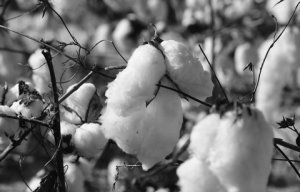
Research shows finer raw cotton best for oil spill remediation
INDA, Association of the Nonwoven Fabrics Industry, whose members include the companies that supply products ranging from baby diapers and feminine hygiene pads to medical nonwoven gowns to household wipes, says its members are playing a crucial role in the desperate effort to contain the BP oil spill that threatens hundreds of miles of sensitive coastline in the Gulf of Mexico. “Nonwovens companies are producing the products that are proving most successful in ads

7th June 2010
Innovation in Textiles
|
Cary, NC
 INDA, Association of the Nonwoven Fabrics Industry, whose members include the companies that supply products ranging from baby diapers and feminine hygiene pads to medical nonwoven gowns to household wipes, says its members are playing a crucial role in the desperate effort to contain the BP oil spill that threatens hundreds of miles of sensitive coastline in the Gulf of Mexico.
INDA, Association of the Nonwoven Fabrics Industry, whose members include the companies that supply products ranging from baby diapers and feminine hygiene pads to medical nonwoven gowns to household wipes, says its members are playing a crucial role in the desperate effort to contain the BP oil spill that threatens hundreds of miles of sensitive coastline in the Gulf of Mexico.
“Nonwovens companies are producing the products that are proving most successful in adsorbing the oil that is flowing out of the BP well,” says Rory Holmes, president of INDA. “Many have stepped up production to meet this incredible, unforeseen demand for meltblown nonwovens.”
Among the many materials and devices being utilized to protect the sensitive Gulf Coast from the largest oil spill in history are adsorbent ‘booms’ primarily made from polypropylene nonwovens. These booms basically consist of a nonwoven tube filled with a number of different polypropylene materials, primarily made from a nonwoven process known as meltblowing. The booms are laid down in the water and their properties attract and adsorb the oil from the water better than any other known similar product.
From a technical perspective, polypropylene meltblown nonwovens are proving to be particularly effective because their specific gravity is lighter than water, so the booms are able to float on the water’s surface. In addition, polypropylene has an affinity for oil that allows it to adsorb the oil in great quantities.
The products utilize meltblown polypropylene as the oil adsorbent because the meltblown fibre diameter is extremely fine and cumulatively presents a large surface to attract and hold onto the oil.
The extremely fine meltbown fibres can adsorb much more oil than most other products , up to 25 times its weight, compared to clay oil absorbent granules, which only absorb up to three times their weight, due to greater surface area of meltblown per a given unit. They work by collecting the oil on the surface of the fibres.
“This meltblown technology is playing a vital role in the cleanup efforts and in slowing the spread of this massive oil spill,” says Holmes. “Our member companies are working diligently to meet this unprecedented demand.”
As another option to deal with the massive oil spill, raw cotton acts a lot like meltblown polypropylene and does not absorb water, floats on the surface of water and has a great affinity for oil. Several nonwoven processes can convert raw cotton into very effective oil sorbents.
A demonstration of how this meltblown technology and these products work is available at www.inda.org . For a list of companies making products that are being used in the cleanup and containment of the Gulf oil spill, go to www.inda.org .

Business intelligence for the fibre, textiles and apparel industries: technologies, innovations, markets, investments, trade policy, sourcing, strategy...
Find out more